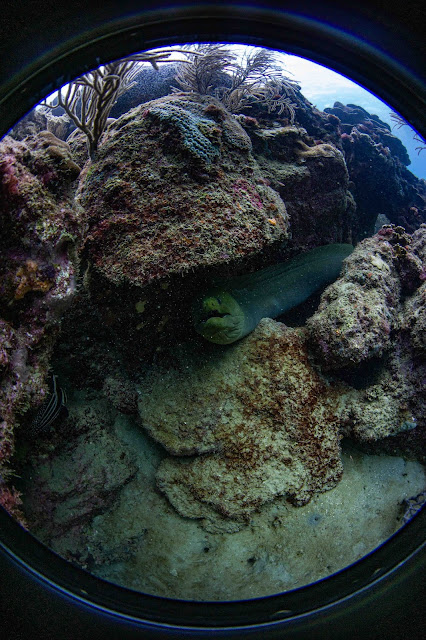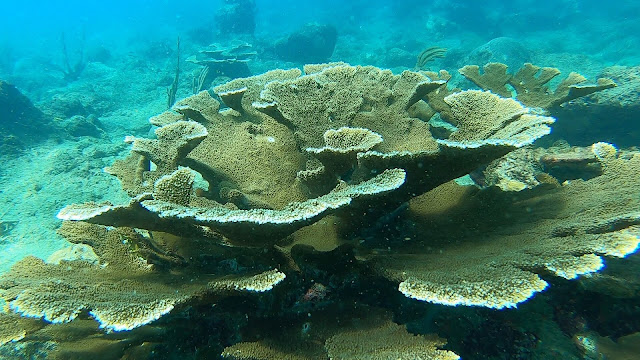The sun is always on: climate change brings opportunity
CLIMATE CHANGE CAN BRING CHANGES FOR THE BETTER
Climate change seems
too big a problem for “me one” to take on. Isn’t this something the government
is supposed to deal with? Something that the big countries like China and India
must tackle? Ruben Smith says that climate change is all of the above. But he
argues that small communities must be alert to the opportunities. He is hoping
that the newly appointed members of the Tobago House of Assembly will meet the
challenges for that island. This feature was first published in the Tobago Newsday on May 18, 2017
 |
| Opportunities for changes come with climate change: the sun is always on as a source of energy! Photo Pat Ganase |
What does climate change mean? In very simple terms, global
warming results from the release of greenhouse gases – such as carbon dioxide
and monoxide, sulphur oxides, and other gases – creates a greenhouse effect,
trapping heat in the atmosphere. At the same time, the growing population of
the earth, our demand for energy and exploitation of fossil fuels (coal, oil,
gas); our demand for food which has depleted the ocean’s larger fish species
and converted forests to fields; has reduced the earth’s ability to store
carbon. The result has been rising (net) atmospheric temperatures, which will
cause the polar ice caps to melt, raise sea levels and alter climate patterns.
If the trend is not halted or reversed, coastlines of the continents will be
submerged, small islands will disappear.
We should all be concerned because the changing climate will
affect everybody.
TRINIDAD & TOBAGO’S COMMITMENT
“In
terms of vulnerability to the effects of climate change, Trinidad and Tobago’s
exposure
to possible impacts has been well documented. As a Small Island Developing
State (SIDS), the country is vulnerable to temperature increases, changes in
precipitation and sea level rise. Other vulnerabilities include increased
flooding, increased frequency and intensity of hurricanes, hillside erosion and
loss
of
coastal habitats. In fact, even though Trinidad and Tobago is not in the main
Atlantic hurricane belt, one of the new natural hazards scenarios considered
for the country is the increased potential to be hit by tropical storms.”
– *Executive summary from the intended National Determined Contribution under
the United Nations Framework Convention on Climate Change (UNFCC).
At the village or community level, it
will affect our ability to grow crops and to find food. You may observe your
trees fruiting in different months. Farmers may find it difficult, or easier,
to grow crops. Fishermen may have to go further to find fish. Dry seasons are shorter
or more pronounced; rainfall less predictable and intense torrential showers
concentrated over an area more prevalent.
The personal reality may not be
indicative of the big picture. While Trinidad and Tobago has substantial
resources and a GDP higher than most of the Caribbean, over the last 20 years
the disparity in income levels of the population has widened. The Gini
Coefficient – which measures the relative differences between the wealthier and
poorer sectors of the population – indicates that even with better education
and nutrition opportunities, income levels over the majority of the population
may be deteriorating. The advantage presented by our oil and gas wealth may be
slipping away if we are not able to seize new opportunities for change.
We admire those nations that have
banned plastics, have better air quality, have started industries based on
recycling or – because they were not blessed with fossil fuel resources – have promoted
new technology and alternate forms, solar, wind, water and waste. If you are
building a new house, you can now install a solar roof. In truth, the
development of a strong renewable energy market may depend on disposable
income, a challenge for individuals in recessionary times.
One alternate plan would be for the
State to use its power generation facility to incentivize the renewable market.
While the State controls the energy resource and distribution of electricity,
it is reasonable therefore to use TTEC as the engine for change: to introduce
solar equipment for households, perhaps providing the equipment at a rental rate
that is on par with electricity consumption. It may not be a net revenue-generating
venture, but an opportunity to introduce photovoltaic generation – with
surpluses going back into the grid – towards savings on natural gas (and
opportunity to deploy elsewhere). It is estimated that the technology is now so
advanced that the investment might be recovered in three to four years.
Trinidad and Tobago currently produces about 52 million
tonnes of carbon per year: power generation, transportation, the manufacturing
sector and homes account for less than half that output. The large proportion
of the country’s carbon footprint is produced by the downstream energy
industries. If we have the political will we can curb greenhouse gases,
principally in the energy sector: by means of an Enhanced Revolving Fund where the
polluter pays in an eminently sensible tax system and proceeds go to finance
Distributed Energy Resources. If we were able to bring solar energy use to 10
or 15 percent of our generating capacity in five years, the saving would
translate into billions US$ per year.
The National
Determined Contribution under the UNFCC seems to fall far short of what
is both possible and beneficial: and also seems to omit the huge
contribution that might be expected from the downstream sector, which produces
more than half of the country’s carbon footprint. Trinidad and Tobago’s
ecological footprint is 8.8 hectares per person, more than five times the
biocapacity (1.7 hectares) for the current population of the planet.
Carbon Reduction Strategies for
Trinidad and Tobago have already been presented to the Government’s Energy
Committee. These include, among others,
·
Carbon sequestration for enhanced oil
recovery;
·
CNG as fuel for vehicles;
·
Renewable energy, from solar, wind and
wave sources.
As yet, none of these have been activated.
Of these opportunities, the greatest sustainable benefit comes from the
introduction and support for renewable energy.
I believe that the challenge must be to
maximize the penetration of renewables into all sectors; using models to find
the optimal grid-tied penetration co–generation mix for the country; one which
would allow different financial platforms while maximizing the resources
available.
 |
| Village communities like Castara ma have what it takes to run their own solar grid. Photo Pat Ganase |
RENEWABLE OPPORTUNITY IN TOBAGO
For Tobago, we are talking about micro
grids or nano grids that would substitute out 30 to 50% of fossil fuels over the
next four years. It should take a simple model to provide electricity for say
10,000 families. What we don’t want is to set up a utility-scale project which
only provides work for a small percentage of the population. Through village
scale distributed energy resources, you create more permanent employment for
installation and maintenance. Five or ten kilowatt systems mean that villages become
self-sufficient, creating opportunities for training and employment, empowering
enterprise and creativity at the ground.
What would it require? It would be timely
for the divisions of the THA to run with a programme for renewable energy.
There is sunshine all year round; wind and wave on every coast.
Further, a carbon tax on (downstream) industries
for their carbon footprints would stimulate the economy according to Joseph
Stiglitz (Nobel Laureate Economics 2001). With renewable energy, the government
can monetize a higher amount of natural gas. Allow the private sector to pick
up the bill for renewables. The banks can support an approach that provides
credit to customers; there’s money to be made in allowing people to invest in
renewable systems.
According to Stiglitz, by bringing
renewable energy on stream in this way, we bridge the inequality in and across
communities. The sun is on, for everyone.
 |
| Ruben Smith is a Trinidadian engineer pioneering solar energy systems. |
IGNACIO RUBEN SMITH is a
principal of SM Solar, which is the
Coordinating Management Entity (CME) for the Clean Development Mechanisms (CDM)
Program of Activities for the Caribbean and Central America. SM Solar is also the
regional contact for the International Solar Energy Society. Mr. Smith’s areas
of research are in the development of Financial Platforms and Stochastic Models
to improve levels of Photovoltaic (PV) Availability, Grid Penetration and
Integration. Mr. Smith holds a Bachelor’s in Industrial Engineering from the
University of Miami (Class 1985), specializing in Management Science and
Modeling. His graduate studies include an M.Sc. in Finance, Project Management
and a Post MBA.
SM Solar is currently
conducting the assessment and installation of a solar array for the National
Trust of Trinidad and Tobago at Nelson Island.
OTHER LINKS
http://www4.unfccc.int/submissions/INDC/Published%20Documents/Trinidad%20and%20Tobago/1/Trinidad%20and%20Tobago%20Final%20INDC.pdf
http://www.footprintnetwork.org/content/documents/ecological_footprint_nations/ecological_per_capita.html


